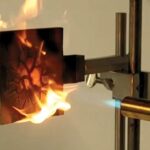BHU researchers develop biosensor to predict heart attack
Researchers from the department of biochemistry, Institute of Medical Sciences, Banaras Hindu University (BHU) have made a sensitive and specific graphene oxide-based electrochemical biosensor for detection of specific micro-particles in blood samples and predict the risk of heart attack or brain stroke. IMS has already applied for its patenting.
According to lead researcher Dr Debabrata Dash, the microparticles released from active platelets, signal the onset of platelet activation, a cellular process which leads to blood clots in the arteries. The blood clots restrict the flow of blood to the brain or heart thus, causing brain stroke or cardiac arrest. “The biosensor detects the microparticles useful for predicting the risk of stroke or heart attack,” he said.
Elaborating about the invention, he said, “We have prepared the biosensor by coating a glassy carbon electrode with graphene oxide and antibodies (PAC1) that bind to specific proteins on the surface of microparticle.” The biosensor selectively detects the microparticles when exposed to plasma containing platelet-derived microparticles (PMPs) and tiny vesicles from non-platelet sources, he added.
“The impedance (the ratio of the resistance to the current) increased dramatically and rose with plasma concentrations of microparticles. Then we were able to use biosensor to detect the presence of PMPs in blood samples of patients suffering from myocardial infarction,” he said.
He added that the novelty of this product lies in its ease of fabrication and detection method, as no electrochemical sensor has yet been reported which could facilitate quick screening and diagnosis of individuals at ‘high-risk’ for developing cardiovascular diseases, eliminating requirement of high-end lab facilities and experienced technicians as needed in current PMP detection procedures.
Citing its advantages, Dash said, “The graphene oxide-based biosensor has many advantages over conventional flow cytometry in detection of PMPs in clinical samples. It requires no expensive instruments, fluorescence labelling or laboratory setup, is quick, sensitive, cost-effective and easy to operate. It can be applied on spot/bedside by patient himself or care provider. We believe that biosensing will prove highly expedient at peripheral health care level as a screening method to identify individuals at high risk to develop coronary artery diseases.”
Dr Jyotsna Kailashiya and Nitesh Singh, under the guidance of Prof Debabrata Dash and in collaboration of Dr Vikas Agrawal of department of cardiology, IMS, BHU have designed the biosensor. It was funded by Tata Innovation Fellowship and the grants received from department of biotechnology, government of India. The work has also been highlighted as one of the best Indian research in ‘Nature India’ and published in January 2015 issue of leading American journal ‘Biosensor and Bioelectronics’. Dash said, “We have already applied for its patent.”
Photo’s captation: BHU logo












